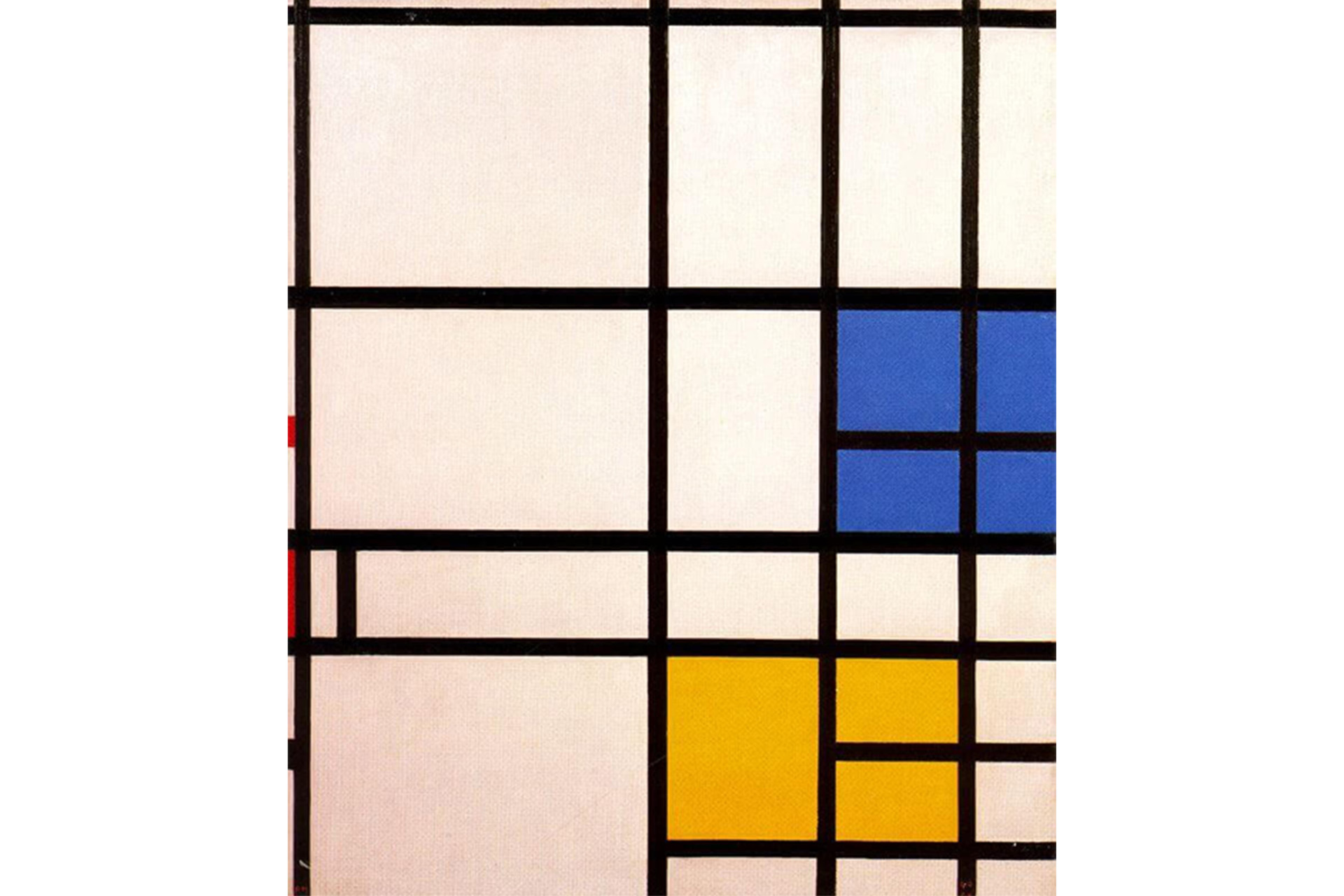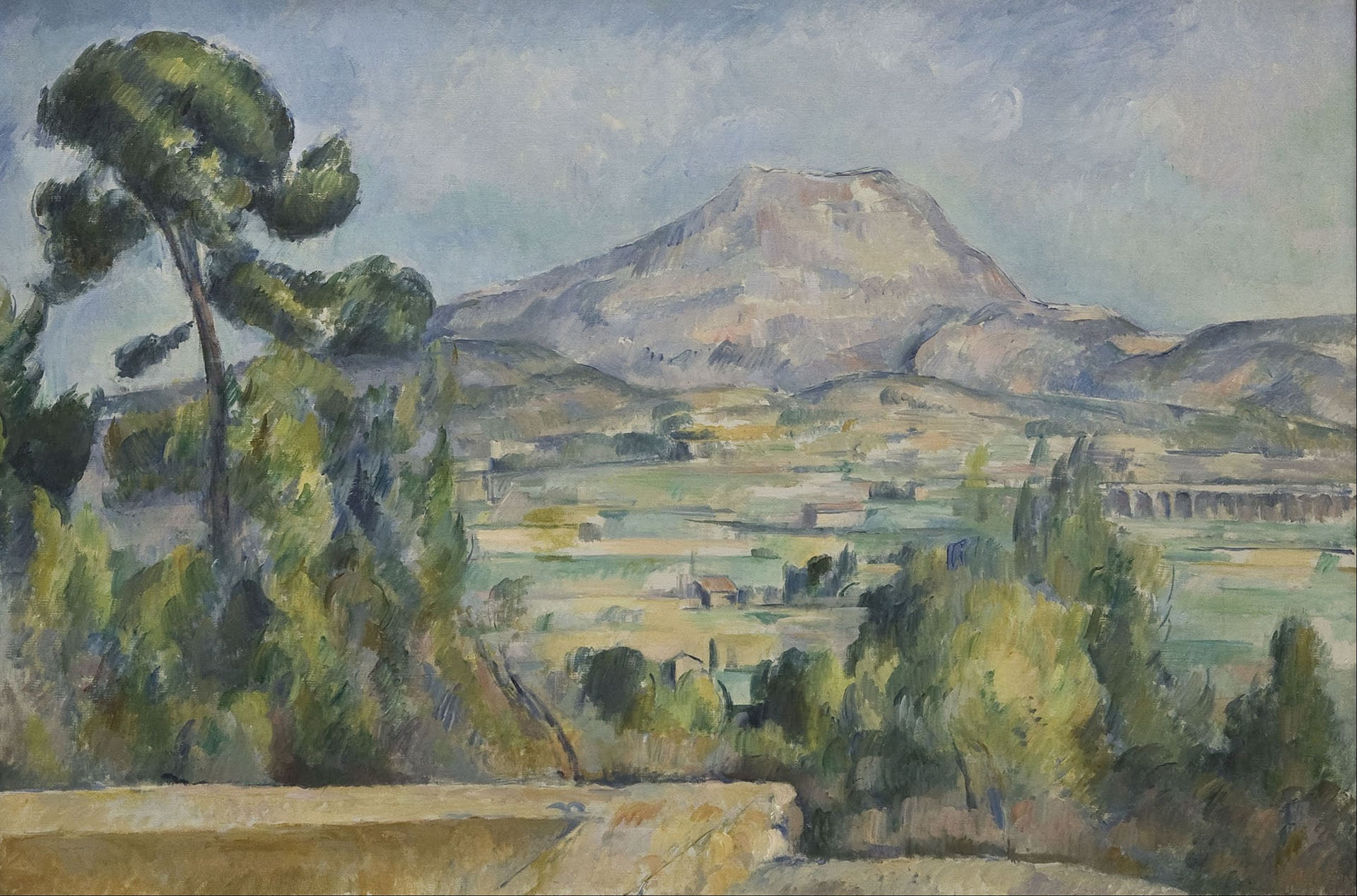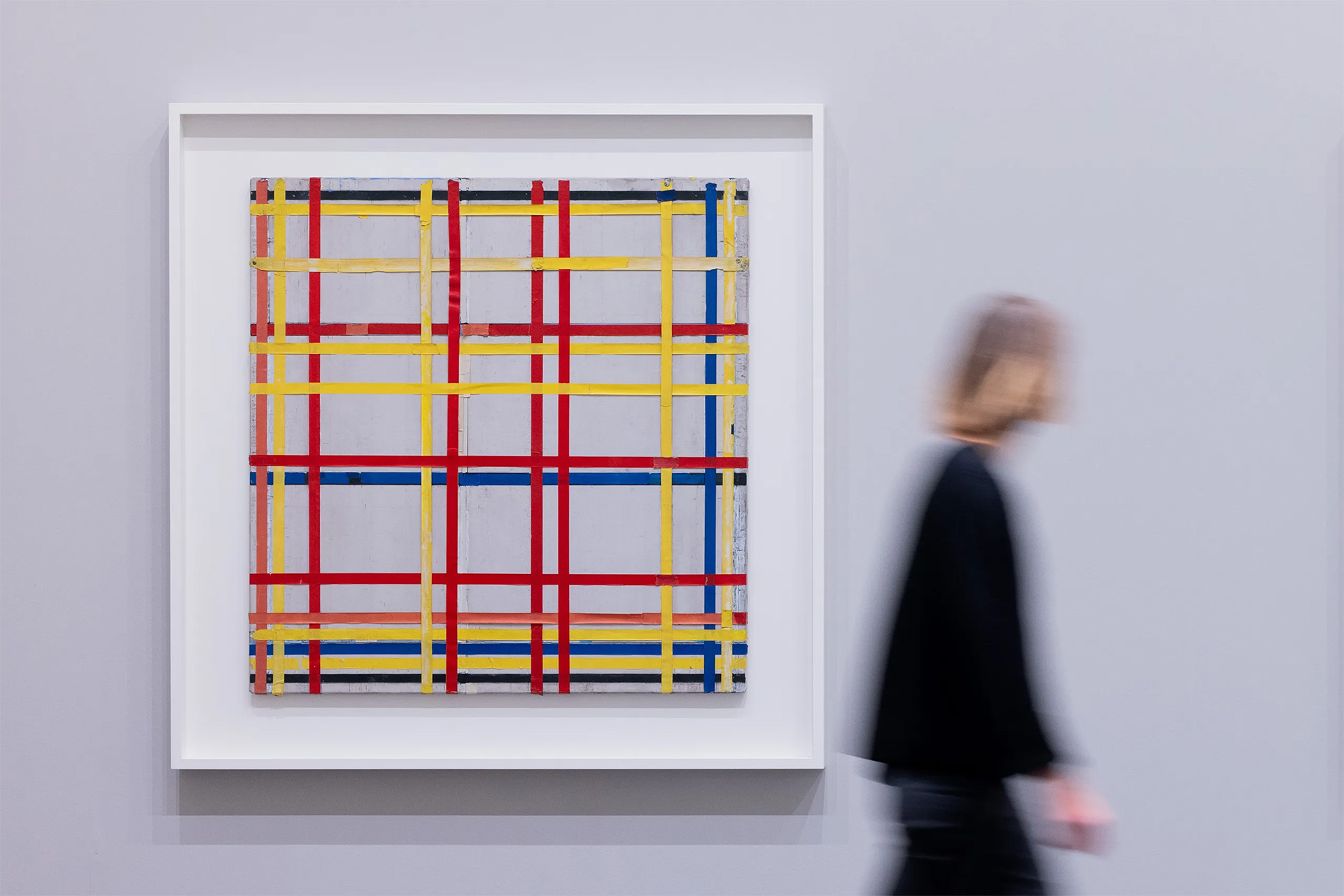Mondrian was a neuroscientist
The art of vision
Neuroscience:
It is commonly thought that only neurologists, neuroscientists, and psycologists are capable of explaining how the brain works. After reading this article, your “vision” of things will expand, and perhaps you will be able to see art and reality in a new light.
The vision of the artists
Have you ever found yourselves in front of a Mondrian painting? It is likely that if no one explains it to you, it would appear to be a white canvas with simple black lines which frame yellow, red, and blue squares. The representation seems simple, linear, and geometric. Semir Zeki, one of the most renowned neurophysiologists of our time, explained Mondrian’s true intent, which was to reduce complex subjects to their basic forms. This is how a person’s face transforms into a square and any complex object can be represented by studying the essence of all forms: the straight line. The interesting thing is that Mondrian’s idea isn’t actually that far off from reality and, in fact, years later, some neurophysiologists have discovered that our brain essentially perceives forms starting from straight lines. A “simple” painter with their works had insight into one of the basic functions of our perception. Mondrian’s paintings thus served to demonstrate the high functional segregation of our neurons in the visual cortex.

Paul Cézanne’s works are also very interesting from a neuroscientific point of view. His revolutionary paintings largely depicted subjects that were considered mundane: fruit, skulls, the landscape of Provence. His art is also actually able to unravel the process of vision. His works were criticized for being “unnecessarily abstract,” yet they show us the world as it initially appears to the brain. His paintings are composed of brushstrokes and dots of color that overlap one another and precisely represent the early stages of vision in which light has not yet been transformed into form. Cézanne’s works can be seen as what reality looks like before it is processed by the brain. This is the magic of his paintings; in order to make sense of abstract objects and landscapes, we have to let our mind intervene.

The eye as a camera or much more?
Can the eye therefore be seen as a camera that captures reality and passes the information to the brain? According to William Wundt, a great experimentalist psychologist, this was precisely the function of the eye: to capture pixels of light and passively send them to the visual cortices. According to him, any sensation could be broken down into its elementary data. Cézanne with his paintings overturned this idea. As we said earlier, his paintings were about the subjectivity of the gaze; in order to look at and appreciate a painting, each observer must put their own into it and reconstruct the landscape that appears to be just a mass of colors. This idea goes beyond that of the Impressionists such as Monet, Renoir, and Degas who believed that sight was simply the totality of its light. In their beautiful paintings they wanted to depict the fleeting photons absorbed by the eye, to describe nature by referring only to its illumination. Cézanne, on the other hand, believed that light was only the first stage of vision. “The eye is not enough, one must also think,” he said. According to him, looking means creating what we see; our impressions also demand interpretation.
Thanks to modern discoveries in neuroscience, today we are able to say that Cézanne was right. Our vision begins with photons as the Impressionists claimed, but that is only the beginning. The information, in fact, must then be transformed into a signal that our brain can encode, and from there our brain areas generate our sensations. Through the interaction of numerous visual areas working synergistically, we are able to construct what we see. For this reason, one could almost go so far as to say that the reality we perceive is not out there waiting to be seen, but is created by our mind.

What happens in our brain
The ability to see seems extremely simple to us; we just open our eyes and immediately recognize the objects around us. In reality, vision is a highly articulated process that works step by step, starting with a simple analysis of the stimulus and ending with the creation in our minds of an increasingly abstract object, almost a concept.
Vision then begins at the eyes, where receptors on the retina capture photons of light and translate them into signals that can then be analyzed by our brain; the photon energy is then transformed into information. This process consequently triggers a chain reaction involving different brain areas where each is responsible for analyzing different aspects of vision.
The visual cortex, located at the back of our head, has several distinct areas, each of which is responsible for analyzing different aspects of the visual stimulus. From the eye, information is sent to the so-called V1 region, the neuronal area where the visual scene acquired by the retina appears as straight lines, such as in Mondrian’s paintings. Hubel and Wiesel, two Nobel Prize winners, found that neurons in the primary visual cortex (V1) do not simply respond to lines in general, but that groups of neurons respond to lines in a specific orientation. Some neurons therefore only fire when the line has a vertical orientation, some horizontal, and some if it is oblique.
From here the process of vision is divided into two pathways: “where” and “what“. Each pathway consists of a series of hierarchically organized centers that receive, process, and transmit visual information to the next center. The “where” pathway connects the visual areas to the parietal cortex, which is responsible for orientation in space. Through the analysis of this pathway, we are able to perceive an object within space. The “what” pathway, on the other hand, proceeds from the visual cortices down to the temporal cortex and is responsible for analyzing all the various detailed aspects of the object which enable us to recognize it.
The first area of the visual cortex where neurons respond to both illusory and real images is V2.
It is because of this area that we begin to perceive a mountain where there is only a thin black line or a landscape in a cluster of colors like in a Cézanne painting. The interesting thing is that these neurons are activated both when we see a mountain and when we only imagine it. At the level then of areas V2 and V3, the simple lines, edges, and angles analyzed by area V1 are combined to obtain the simple contours of objects. Once the information reaches this stage, it is passed to the next areas, V4 and V5, which are responsible for color and motion perception, respectively. At this stage, the information is sent to the temporal lobes in which there are regions composed of neurons that specialize in object, facial, and landscape recognition.

The art of sight
In light of these neuroscientific findings, we can say that vision can be compared to art since what we see is not real.
When we open our eyes, we enter an illusory world, a scene encoded by the retina and recreated by the visual cortex. Just as a painter interprets a painting, we interpret our sensations.
The means by which we express how we see the world is art, not science. When we stare at Cézanne’s paintings, it is as if we are inside his head and see the world through his eyes (and his brain).
We can therefore say that we do not function as mere cameras, and as Cèzanne rightly guessed, to see is to imagine. If we relied only on our eyes, all we would see would be mere dots of light – there would be no landscape before us. It is only through our brains that we are able to construct the world around us.
Martina Zanotto
Psychologist, Neuroscience specialist
Bibliography:
Eric R. Kandel, L’età dell’inconscio, Arte mente e cervello dalla grande vienna ai nostri giorni, Raffaello Cortina Editore, 2016
Lehrer, Proust era un neuroscienziato, Codice edizioni, 2008
Zeki, La visione dall’interno. Arte e cervello, Bollati Boringhieri, 2007

